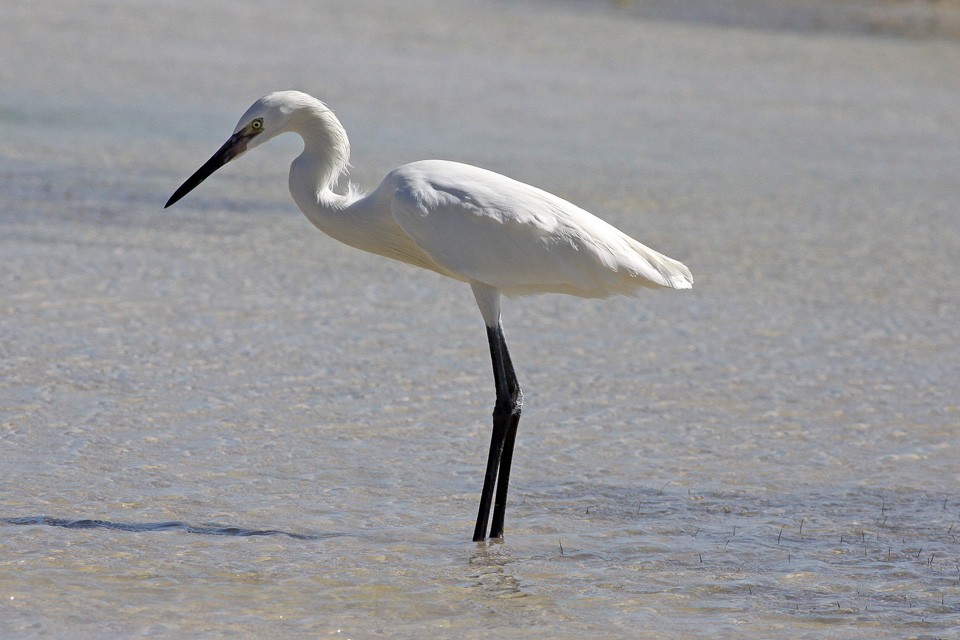Reddish Egret
A species of Typical Egrets Scientific name : Egretta rufescens Genus : Typical Egrets
Reddish Egret, A species of Typical Egrets
Botanical name: Egretta rufescens
Genus: Typical Egrets
Content
Description People often ask General Info
Description
This species reaches 68–82 cm (27–32 in) in length, with a 116–125 cm (46–49 in) wingspan. Body mass in this species can range from 364–870 g (0.802–1.918 lb). Among standard linear measurements, the wing chord is 29–34.3 cm (11.4–13.5 in), the tail is 8.8–13 cm (3.5–5.1 in), the bill is 7.3–9.2 cm (2.9–3.6 in) and the tarsus is 11.7–14.7 cm (4.6–5.8 in). It is a medium-sized, long-legged, long-necked heron with a long pointed pinkish bill with a black tip. It is distinctly larger than other co-existing members of the genus Egretta, but smaller than the great blue heron and great egret. The legs and feet are bluish-black. While the sexes are similar, there are two distinct color morphs. The adult dark morph has a slate blue body and reddish head and neck with shaggy plumes. The adult white morph has entirely white body plumage. Young birds have a brown body, head, and neck. During mating, the male's plumage stands out in a ruff on its head, neck and back. 
Size
69-81 cm (27-32 in)
Colors
Brown
Black
Red
Gray
Life Expectancy
12 years
Nest Placement
Tree
Clutch Size
3 - 6 eggs
Incubation Period
1 brood
Number of Broods
21 - 36 days
Nestling Period
28 - 35 days
Feeding Habits
Reddish Egret predominantly feeds on minnow-like fish, occasionally consuming shrimp and crab. Reddish Egret exhibits dynamic foraging tactics, such as startling prey with wing movements or 'canopy feeding' by creating shade with its wings to lure prey and reduce sun glare for better visibility.
Habitat
Reddish Egret is typically found in coastal habitats, favoring tidal flats, salt marshes, and lagoon ecosystems. They predominantly inhabit low-lying, saline environments, thriving at sea level where water depths range between 2–6 inches, often amidst algal beds. For nesting, mangroves are the vegetation of choice, although in their absence, reddish Egret may utilize lower beach flora like goldenrod. Whilst they occasionally forage in freshwater ponds, their primary foraging zones include cat's-eye ponds, tidal inlets, and overwash deltas with trapped fish in barrier islands.
Nest Behavior
Reddish Egret pairs build nests with the male gathering materials and the female arranging them, although they can switch roles. Nesting includes reusing previous nests or ones abandoned by other species. They engage in robust parental care for their eggs and young.
Nest Characteristics
Reddish Egret's nests are often located in trees, usually mangroves, well above ground and typically over water, within mixed-species colonies. Constructed by both sexes, these flat platforms are made of twigs and sticks, averaging 23 inches across and 9 inches high, and lined with grasses and forbs.
Dite type
Piscivorous
People often ask
General Info
Feeding Habits
Bird food type
Behavior
Reddish Egret exhibit a blend of unique and standard heron behaviors. Their daily activities primarily include foraging in shallow waters, engaging in elaborate courtship displays, and nurturing their young during breeding season. Reddish Egret's distinctive hunting technique involves a lively dance - sprinting, hopping, and erratically flapping its wings to scare prey. Monogamous by nature, pairs form in April with males initiating courtship by showcasing plumage and vocalizing. Interaction within their habitat is characterized by vigorous defense of feeding territories. Reddish Egret thrive in coastal marshes and lagoons, where their behavior is a vital part of the ecosystem's dynamics.
Species Status
Not globally threatened.
Scientific Classification
Phylum
Chordates Class
Birds Order
Pelicans and Relatives Family
Herons Genus
Typical Egrets Species
Reddish Egret 